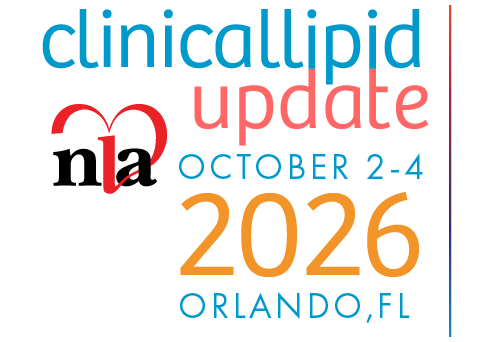The armamentarium for lipid-lowering pharmacotherapy is evolving. Though statins remain the cornerstone of treatment, and nearly all statins and ezetimibe are generic, recent and emerging therapies such as PCSK9 inhibitors, bempedoic acid, evinacumab, and inclisiran will pose significant challenges in patient access and affordability. When a prescription is sent to a patient’s pharmacy, there is a lot left to chance:
● Will it need prior authorization?
● Was the payer’s preferred agent selected?
● Will the patient be able to afford it?
As clinicians, many barriers to adherence are out of our control, but improving access through careful documentation, referral to appropriate financial assistance programs, and partnerships with medication access specialists can have a major impact on availability and adherence.
Prior authorization (PA) can be the first hurdle when patients are prescribed brand name medications or non-preferred generics. Thorough documentation in office visit notes can often circumvent many of the headaches with PA’s. Getting the approval on the first attempt without having the insurance request additional information saves a lot of time. Because many insurers follow similar utilization criteria, tremendous success can be had by leveraging the electronic medical record to prompt inclusion of details to satisfy the criteria: direct specification of the indication, statin and non-statin history
(doses, reactions, and dates if available), lifestyle interventions, and a recent lipid panel.
Once the medication is approved by insurance, too often patients are left with unaffordable copays. The type of copay assistance a patient is eligible for is dictated by the type of insurance.
Commercial insurance:
- Manufacturer copay card: The easiest type of copay assistance is only available for patients with commercial coverage and no additional government-funded insurance (i.e. Medicare, Medicaid, Veterans Affairs, Tricare, etc.). Most brand name drugs have manufacturer copay cards available to significantly lower the patient’s out of pocket cost. They are easy for the patient to sign up for on the manufacturer’s website or by phone. Though usually not reached, patients should be aware they often have maximum monthly or annual benefits stated in the fine print.
Medicare Part D:
- State pharmaceutical assistance programs: Some states have programs that subsidize Medicare Part D premiums and/or supplement drug costs.(1) Each program is different, and eligibility varies based on income, with some programs limited to people with particular illnesses. Some of these programs continue to provide coverage during the Part D plan’s coverage gap.
- Extra Help (also known as Low-Income Subsidy): Eligibility for this federal program is based on income and assets. It pays Part D premiums and significantly lowers copays throughout the year with no coverage gap.
- Foundation assistance: Perhaps the most widely-applicable type of assistance for patients with Medicare Part D. The HealthWell Foundation is a charitable organization that has funding available for patients with hyperlipidemia and income at or below 500% of the Federal Poverty Level. This fund covers most antihyperlipidemic medications, awarding up to $2,500 annually to those who qualify. The downfall of foundation assistance is that funding occasionally runs out. To help with this problem, the Patient Access Network (PAN) Foundation developed a program to monitor many charitable organization funds, called FundFinder (https://fundfinder. panfoundation.org/). Patients can sign up for email or text alerts when a fund has opened. Many disease states are available.
Commercial or Medicare Part D:
- 90-Day Prescriptions: Many plans offer a discount for filling a 90-day supply. Once patients are stable on a medication, consider changing to a 90-day prescription to help with cost and adherence.
Uninsured:
- Manufacturer free drug programs: Often available for brand name medications for patients without insurance. Many have income and asset limits and involve lengthy applications for the patient and provider to complete. However,
if approved, many will supply medication to the patient for a year or specified timeframe, after which the patient needs to reapply or is often referred to apply for Medicaid or Medicare if they qualify. - GoodRx.com: This website (and smartphone app) helps patients shop around for the most affordable cash price at local pharmacies, which can be particularly helpful for generic medications. These digital coupons cannot be used with insurance, meaning prescriptions filled with these coupons do not count toward deductibles and may not be the most cost-effective over the course of the year for those with insurance.
Because the authorization and assistance processes can be quite a burden, partnering with other members of the healthcare team can greatly increase medication accessibility. For example, the University of Rochester has an integrated dispensing specialty pharmacy that includes clinical pharmacists and medication access specialists that help with the prior authorization, copay assistance, and clinical follow-up for patients prescribed PCSK-9 inhibitors (Figure 1). This resource has improved the ability of clinicians to focus on health issues. Having a dedicated team to handle these issues relieves provider burden as well as improves medication adherence and persistence. A major goal should be making available such resources in rural and indigent communities in order to alleviate disparities that directly improve patient health.
Disclosure statement:
Dr. Manou has no financial disclosures to report.
Dr. Block has received honoraria from Opus-Medicus.
References are listed in the 2021 Fall LipidSpin .pdf on www.lipid.org






.jpg)
.png)













